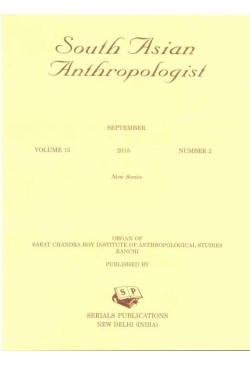
South Asian Anthropologist
Frequency :Bi-Annual
ISSN :0257-7348
Peer Reviewed Journal
Immigration and Integration Policy and the Formation of Indian Diaspora in Canada
Contraceptives and Acceptance of Spacing Methods of Family Planning in Two Villages of Palampur Block, Kangra District, Himachal Pradesh
Oral Literature and Cultural Memory: Mao-Poumai Tribal Folklore of Northeast India
Anencephaly: Clinical Patterns, Associated Risk Factors and Maternal Awareness in Victoria Hospital, Bangalore
Lammasingi: A Multitribal Village in Eastern Ghats of Andhra Pradesh
Socio-economic Correlates and Prevalence of Undernutrition among Nyishi Tribal Pre-school Children of Northeast India
Baluchari: Evolution and the Present Status of the Craft
Impact of Urbanization and Modernization on the Tharus and the Oraons of West Champaran, Bihar
Traditional Beliefs and Ethno-medical Practices among Konda Reddis of Khammam District, Telangana
Dynamics in Economic Status of Tribal Women of Forest Villages in Darjeeling and Kalimpong, West Bengal
T. C. Das Sitting in the Armchair: The Other Side of the Fieldworker Anthropologist
Obituary: Dibyendu Kanti Bhattacharya (28 June 1938-25 December 2017)